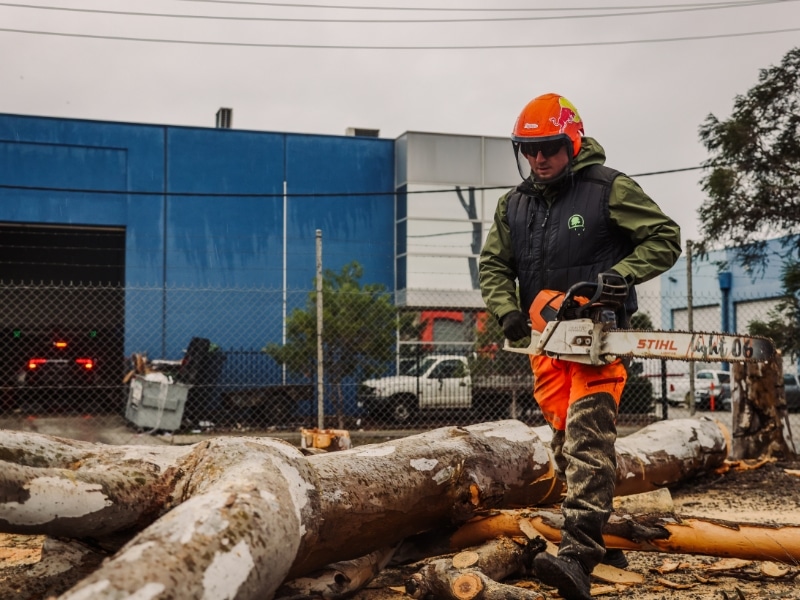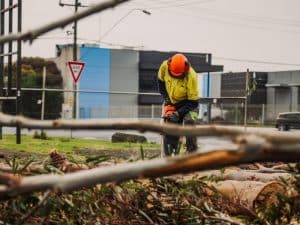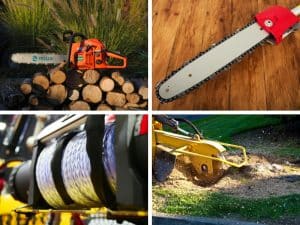After a severe storm rips through Melbourne, it’s common to see broken branches, leaning trunks, and tree debris scattered across properties. In the chaos, many homeowners face a key question: Should tree removal after storm events happen immediately, or can it wait?
Delaying might seem harmless at first. But in most cases, postponing tree removal introduces unnecessary risks to safety, property, and even local compliance.
Why is tree removal after a storm often urgent?
At first glance, a damaged tree might appear stable. However, storm-affected trees often hide internal structural weaknesses. What seems like a minor issue could evolve into a major hazard within days.
- Storm winds may create hairline fractures in major limbs
- Root systems often shift or lift, destabilising entire trees
- Rain-saturated soil makes trees prone to toppling
- Trees close to power lines or structures pose an immediate danger
A common scenario involves a tree leaning gently toward a garage or fence. The lean might not worsen for several days, but it only takes one extra gust or further rain to push it over. Even a moderate wind event after a storm can bring down previously stressed trees. Early removal allows for clear access to your home, makes insurance documentation easier, and prevents more severe incidents later on. Professionals experienced in managing tree removal after a storm for safety can assess risks you may not see, from stress cracks to compromised root zones.
What risks come with delayed storm tree cleanup?
You might be tempted to leave cleanup for the weekend or wait until you’ve sorted more pressing repairs. However, debris and damaged trees left too long start to compound your problems.
- Invasive pests are drawn to decaying wood and bark
- Fungal growth spreads quickly in post-storm humidity
- Unstable branches can drop suddenly, even in calm conditions
- Property damage from rot or falling limbs increases daily
Beyond physical risks, there are administrative ones. Insurance companies might argue that negligence occurred if a damaged tree was left standing after the event. What started as a fallen limb can become grounds for a disputed claim if left unchecked.
Planning for full-site restoration also involves ground care. Learning how to level ground after tree removal ensures that uneven terrain is corrected, helping with regrowth, drainage, and overall yard health post-removal.
How can lingering debris endanger your property?
Even if large trees seem out of the way, leftover debris presents a different set of dangers. It often appears less urgent than upfront damage but creates compounding safety, health, and environmental issues.
- Branches can block gutters and cause roof drainage failures
- Water pooled under logs breeds mosquitoes and other insects
- Rodents and snakes nest in untouched wood piles
- Dead matter encourages mould, especially near structures
In Melbourne’s dry season, leftover tree debris also becomes a bushfire risk. What looks like natural mulch could ignite quickly under the right conditions, especially if near wooden fencing or dry grass.
These dangers make it critical to act quickly. If you’re unsure where to start, consider responsible ways to dispose of tree debris. Options include mulching, local council pickup programs, or professional removal services that ensure compliance with waste regulations.
What are the first steps in post-storm tree removal?
Storm recovery is stressful, and it’s tempting to start clearing with whatever tools you have. However, without a plan, that approach can create more risk than it solves. Here’s how to start with site evaluation:
- Do not approach any tree near power lines
- Rope off or cordon hazardous zones
- Photograph visible damage for claims or permits
- Contact a qualified arborist for a structural assessment
Avoid climbing trees or attempting major cuts yourself. Storm damage often weakens load points, making branches collapse unexpectedly. Arborists trained in post-storm scenarios understand how to read signs like cracked bark, split joints, or shifting root plates.
| Step | Why It Matters |
| Rope off danger zones | Keeps family and neighbours safe |
| Take wide-angle photos | Helps speed up claims and council applications |
| Schedule a professional review | Ensures nothing gets missed in initial checks |
| Start with access points | Restores emergency entry/exit for vehicles |
| Monitor remaining trees | Stress often affects more than just one tree |
By organising a phased plan, you reduce risks and ensure insurance or council records are clear and complete.
Which tools make tree removal after storms easier?
The right tools can mean the difference between a safe, efficient cleanup and a risky one. Attempting tree removal with unsuitable gear not only delays the process but also puts you at serious risk of injury.
- Chainsaws are ideal for large limbs, but only with safety gear
- Pole saws let you reach high branches without climbing
- Winches and ropes control the fall of leaning trunks
- Stump grinders help eliminate tripping hazards and regrowth
Even with good tools, knowing where to begin is half the job. Before making cuts, it is essential to assess each tree’s position, lean angle, and structural health.
That’s why assessing tree fall risk after heavy winds is a recommended first step. This resource provides insights into spotting signs of structural failure, helping you decide when DIY is safe or when expert help is needed.
Can council rules affect tree removal after storms?
Yes, even storm-damaged trees can be protected under local Melbourne council laws. Ignoring these rules can lead to fines or forced remediation. Each municipality handles things differently:
- Some trees over a certain diameter require permits, even if damaged
- Native and significant species may need arborist reports
- Heritage overlays add another layer of red tape
- Fines for unauthorised removal can reach thousands
Permits are often expedited during emergencies, but paperwork still applies. Keeping a detailed record—photos, dates, arborist notes—helps you navigate the approval process and avoid retroactive penalties. Additionally, understanding council tree removal regulations helps you act quickly without stepping outside legal boundaries, especially in heritage areas or tree conservation zones.
Conclusion: Why timely storm cleanup matters most
Storms hit hard and fast, but the damage they leave can linger. Every day you delay cleanup increases the risks to your property, safety, and wallet. Trees don’t always fall right away. Hidden fractures, soil shifts, and weakened roots can cause delayed collapses days or weeks later.
Quick action not only reduces these dangers but also supports better recovery. Clean spaces are safer to walk through, easier to rebuild, and less likely to attract pests or mould.
By staying proactive and informed, you reduce the risk of long-term damage while creating a safer outdoor environment. If you’re seeking reliable insights to guide your next steps—whether it’s dealing with debris, permits, or long-term recovery—it’s worth exploring practical advice from The Yard experts to make confident, well-informed decisions.




